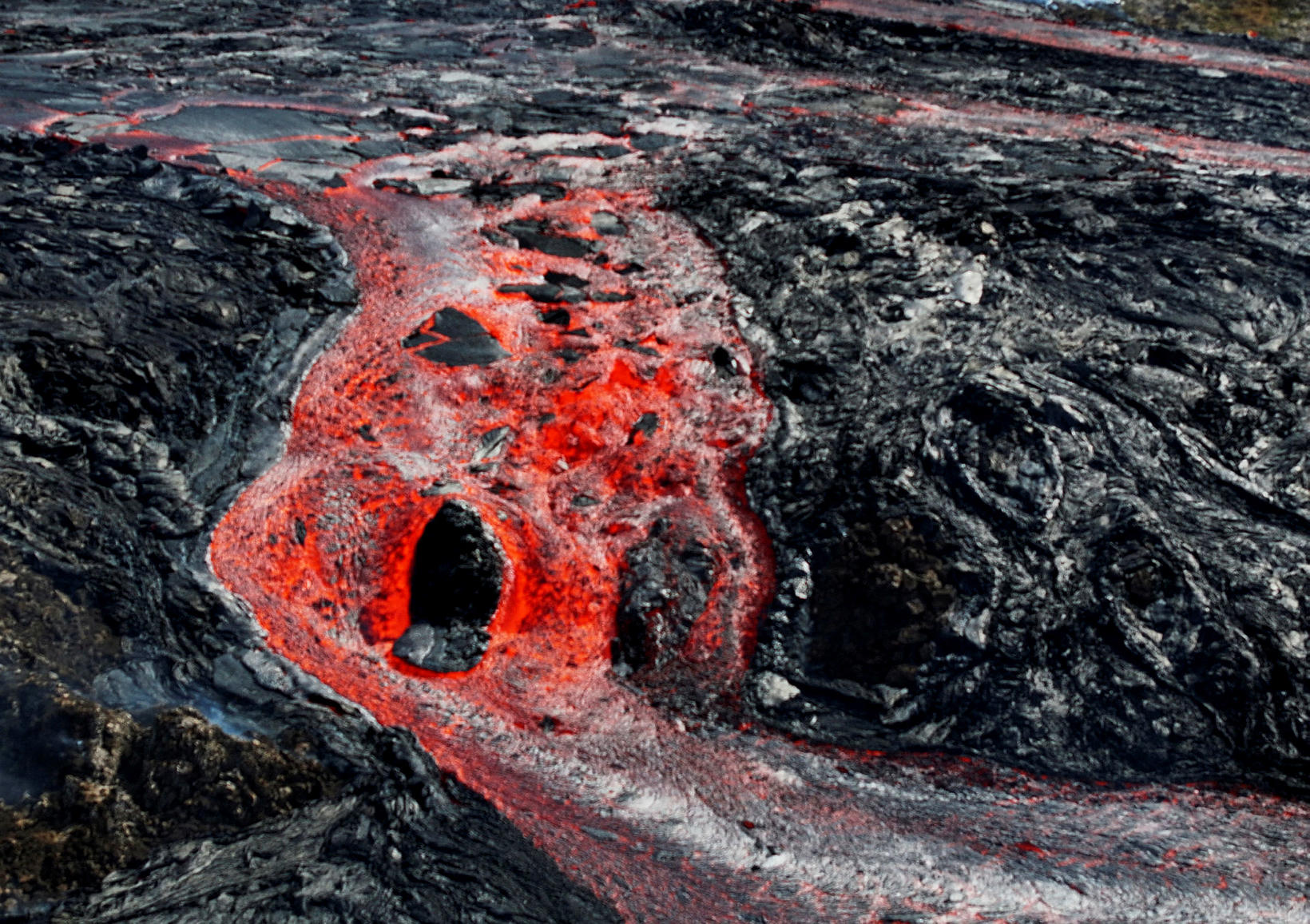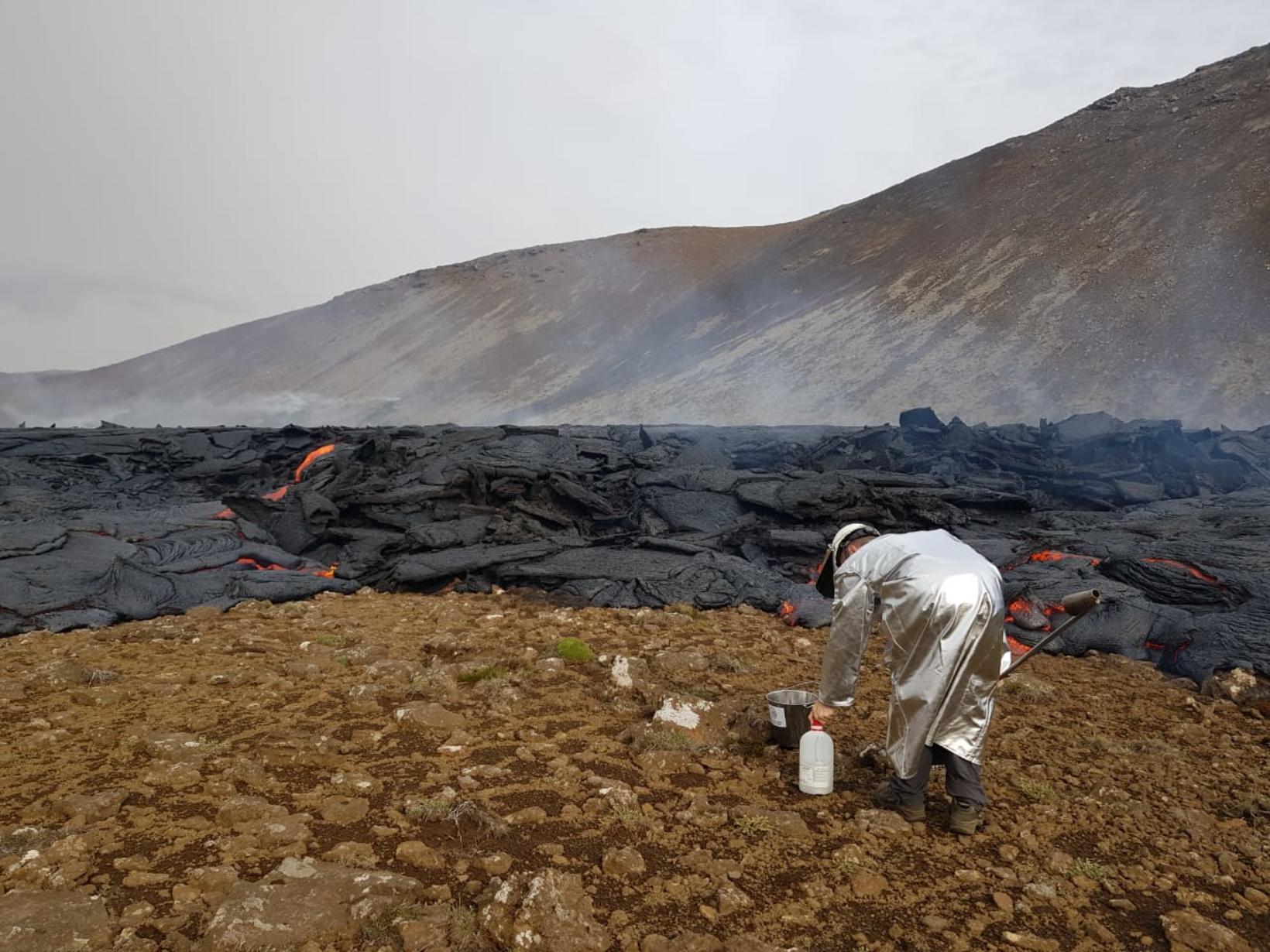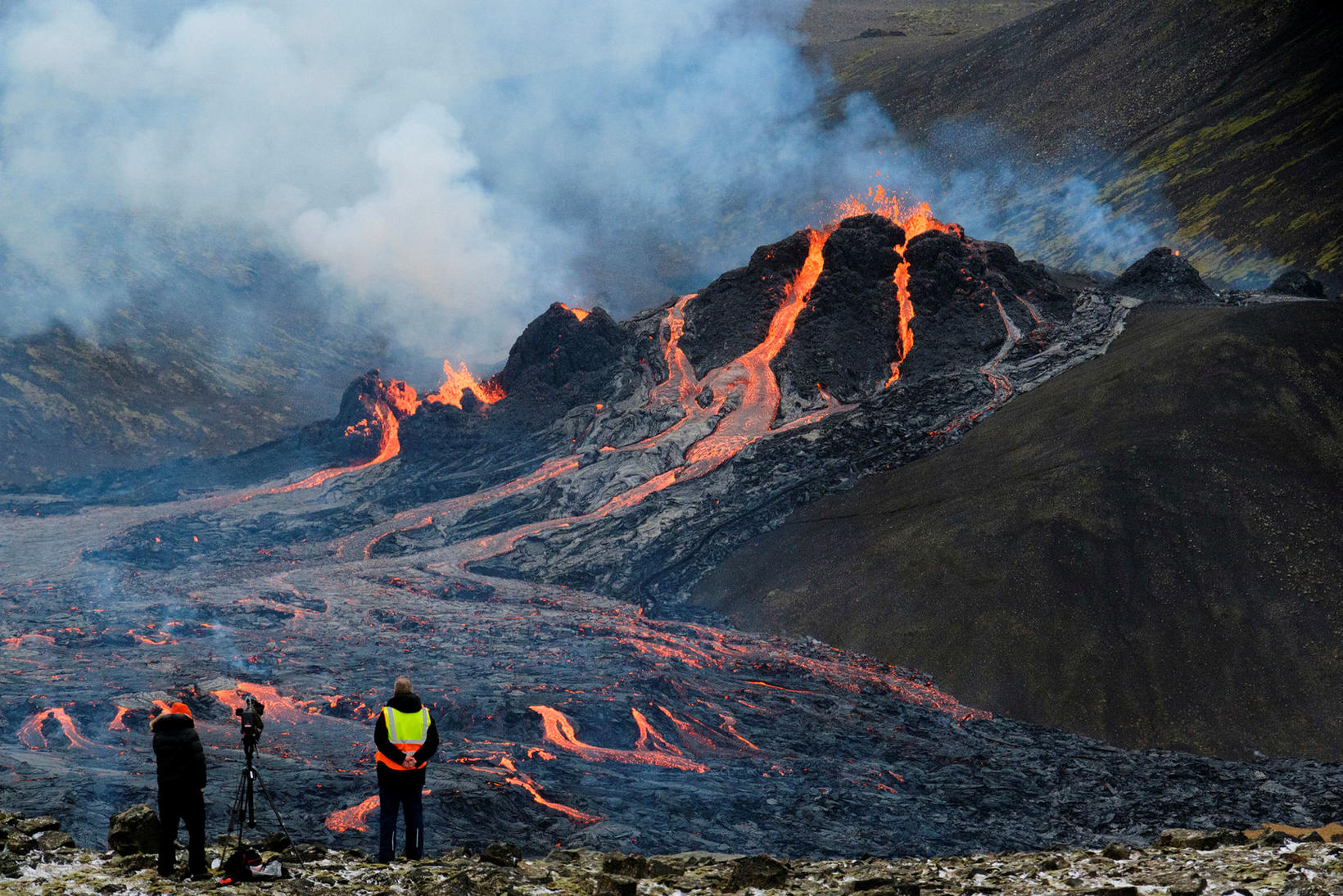A surprise change in the magma
The first analysis of samples taken at the eruption site has been surprising to scientists. mbl.is/Eggert Jóhannesson
The magma from the eruption at the Sundhnúkagígar crater row differs significantly from its predecessors. It is more similar to the magma from the Geldingadalir eruption during the first days of the eruption in March 2021, going by the first analyses made.
This is what Olgeir Sigmarsson, a geoscientist at the Institute of Earth Sciences at the University of Iceland, says to mbl.is.
The University of Iceland’s Institute of Earth Sciences published the first rock and mineralogy data from the lava field at Sundhnúkagígar crater row yesterday.
Two samples have been analyzed, a tephra deposit and secondly a lava deposit, which came to the surface when the eruption began on May 29.
Comparison of the glass compositions from the May 2024 eruption with preliminary glass data from previous eruptions in the area since 2023, and with glass data from the first 50 days of the 2021 Fagradalsfjall eruption Chart/Institute of Earth Sciences University of Iceland
More like the first eruption in 2021
Once the lava was chemically analyzed, scientists came across one interesting thing:
“It’s especially the ratio of potassium dioxide to titanium dioxide, which tells us roughly what strain of magma this is,” Sigmarsson tells us.
The lava from previous eruptions on the Sundhnúkagígar crater row has had a relatively high ratio of potassium dioxide to titanium dioxide, similar to what came up in the Mt Litli-Hrútur eruption in 2022 and the Meradalur eruption in 2022.
“By contrast, at the beginning of the eruption in Geldingadalir in March [2021], magma came up with a very similar potassium-titan ratio as we are seeing now,” he says, “It’s like the magma that’s coming up now is of the same strain as the one that first appeared in Geldingadalir.”
Morgunblaðið reported last August that the magma that surfaced last summer was quite different from the magma that has been seen before on the Reykjanes peninsula.
However, now there seems to be a change again.
Best to ask “the devil”
The unexpected similarities between the two eruptions, which occurred three years apart, are considered interesting for several reasons.
One reason is that the eruption occur in two different volcanic systems, although Sigmarsson says that it is only a “definition” issue, the traditional definition of volcano systems in Iceland does not apply to the Reykjanes peninsula.
Another reason is that magma that comes up at Sundhnúkagígar crater row is first collected in a magma chamber under Svartsengi. After a brief accumulation period there, it then pops onto the surface, but then the magma has cooled, crystallized a little, and is usually more advanced.
This was not the case in the eruption in Geldingadalir.
But how can it be that the magma that is now rising to the surface appears to be of the same strain as the one that came in Geldingadalir 2021?
Sigmarsson laughs. “You have to ask the devil about that.”
Needs more investigation
“It’s the same kind of magma. That’s all we can say and it’s possible that this magma comes from the area between crust and mantle,” he added.
Sigmarsson adds that it is possible that the change could have occurred when the inflation started again in April. At that time, the eruption was still ongoing and the volcano was therefore considered unusual, but we are now looking at a similar scenario in the eruption that began on May 29.
He states that only the first analysis of the lava field is being carried out so the overall picture has not been revealed yet.
“We don’t know yet if this is the same magma that came in 2021. It still needs more investigation.”
On the website of the Institute of Earth Sciences of the University of Iceland this is stated:
“Samples of tephra and quenched lava were collected north of Fiskidalsfjall and east of Sýlingarfell on the 1 st day and 4 th day of the eruption at Sundhnúkagígar that started on May 29 th . The volcanic glass in the samples was analysed with the electron microprobe of the Institute of Earth Sciences, University of Iceland. The lava and tephra are composed of vesicular glass, plagioclase, olivine and clinopyroxene crystals. The tephra glass is microlite-free, whereas quenched lava samples contain variable amounts of microlites. Overall, the petrographic features of the new lava resemble those of previous lavas erupted at Sundhnúkagígar since December 2023 .”





/frimg/1/38/77/1387784.jpg)





